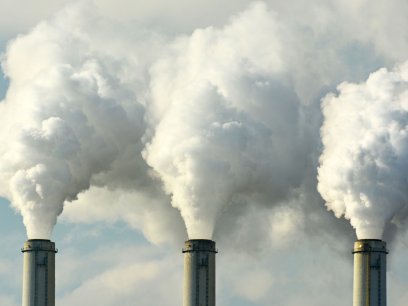
On Sunday, February 4, the Philadelphia Eagles and the New England Patriots hit the field at US Bank Stadium to go head-to-head in the Super Bowl. Before one of these teams takes home the big trophy, discover the impacts each team's state is experiencing from a changing climate. Pennsylvania, the home state of the Philadelphia Eagles, is experiencing increases in extreme heat, sea level rise, and heavy downpours. Massachusetts, the home region of the New England Patriots, is experiencing earlier springs and increases in salt water intrusion, precipitation, and hotter summers.
Pennsylvania
- The average annual precipiation in Pennsylvania has increased about 10% in the last centruy.
- The amount of precipitation falling during extremely heavy rainstorms has increased by 70% in the Northheast since 1958.
- Pennsylvania has undergone a long-term warming of more than 1.8°F over the past 110 years
Sea level is rising more rapidly along Pennsylvania's shoreline than in most coastal areas because the Delaware Valley is sinking. The tidal portion of the Delaware River is expected to rise another one to four feet in the next century. Consequences of rising sea levels for Pennsylvania include submerged wetlands, increased coastal flooding, and reduced availablity of freshwater. In addtion, the infrastructure in coastal cities and towns will become more vulnerable to frequent floods and higher storm surges.
Massachusetts
- Massachusetts has warmed by more than two degrees Fehrenheit in the last century.
- In the Northeast, average annual precipitation increased 10% from 1895 to 2011 and precipitation from extremely heavy storms has increased 70% since 1958.
Rising temperatures and shifting seasons are likely to increase the intensity of droughts and floods. As snow melts earlier in the spring and temperatures increase, soil will become drier in the summer and fall and the likelihood of flooding in the winter and spring and droughts during the summer and fall will increase. This shift in seasons and incerase in temperatures can also lengthen the season during which insects that transmit diseases such as Lyme disease and West Nile Virus are active.
What You Can Do:
- Save money, energy, water, and fuel by making simple adjustments to your daily routine with the Resolve to Save Calendar.
- Learn more about the impacts of climate change in NEEF's free online courses, Extreme Weather 101 and Dealing with Drought.
Sources:
- EPA. 2016. "What Climate Change Means for Georgia." AccessedJanuary 30, 2018. https://19january2017snapshot.epa.gov/sites/production/files/2016-09/do…
- EPA. 2016. "What Climate Change Means for Pennsylvania." Accessed January 30, 2018. https://19january2017snapshot.epa.gov/sites/production/files/2016-09/do…;
- NOAA. 2016. “Sea Level Trends”. Accessed February 1, 2016. http://tidesandcurrents.noaa.gov/sltrends/sltrends.html
- Pennsylvania DEP. 2016. "2015 Climate Change Action Plan Update." Accessed January 30, 2018. http://www.elibrary.dep.state.pa.us/dsweb/Get/Document-114163/FINAL%202…;
- USGCRP. 2014. "National Climate Assessment: Northeast." Accessed February 7, 2017. http://nca2014.globalchange.gov/report/regions/northeast
- USGCRP. 2014. "National Climate Assessment: Southeast." Accessed February 7, 2017. http://nca2014.globalchange.gov/report/regions/southeast


